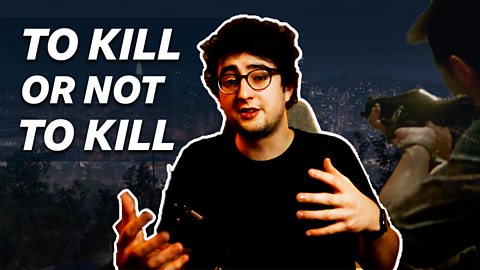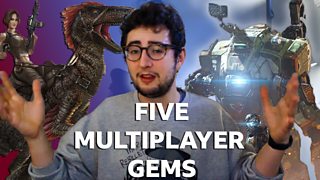How non-lethal playthroughs enhance your gaming experience
By Aaron Bayne // Βι¶ΉΤΌΕΔ The Social contributor // 27 January 2021
Video games are synonymous with violence. It is integral to almost almost every video game experience whether that be through critiquing combat, gushing over difficult enemies, or strategising. But what if that part of the game could be surpassed?
Violence within video games can be a contentious issue but as games have improved and evolved, offering up fuller characters and richer experiences, non-lethal playthroughs have become more of an option.

How The Non-Lethal Playthrough Changes Gaming
Aaron takes a look at how a non-lethal play style completely changes a gaming experience.
A non-lethal playthrough is a method of completing a game without killing an enemy. Initially popularised by the Metal Gear Solid series, it was later adopted by several other franchises such as Dishonored.
A non-lethal playthrough isn’t the objective set by the game - an option, a personal goal. For me it all stems from character association. If I’m playing as someone like Agent 47 from the Hitman series, then violence makes sense as that character. However, if I play as Watch Dogs 2’s young, vibrant hacker; Marcus Holloway, not so much.
Marcus is somebody that I didn’t believe would murder without hesitation.

So, with its inclusion of 3D Printed taser and surely painful, but non-deadly, pool ball on a rope, I took to an evasive playstyle that added a level of difficulty that could be irritating at times. It also increased my engagement however, because I was playing the story in a way that felt right to me.
Compare this to a character like Nathan Drake from the Uncharted series. Sure, during cutscenes he’s the affable everyman quipping his way through history as listed buildings crumble around him, but as soon as the actual game starts he’s gunning down people by the thousands. Uncharted forces that disconnect between the narrative Drake and the gameplay Drake. But for games like Watch Dogs 2, they leave that space for interpretation, asking you who you think this character is or who you want them to be.
The Last Of Us 2 tries to tackle the cycle of violence by making you feel the weight of each kill. There is an option to approach the game stealthily and mitigate the number of enemies you murder, but an entirely pacifist playthough isn’t possible and from a narrative point of view, shouldn’t be.
However in Dishonored 2, developer Arkane Studios and their form of game design leaves levels open and approachable.

Take The Royal Conservatory as an example. You’re presented with a gate you must get through. Now you could kill the guards, cut the power to the zappy wall of light, and walk through. Or through the use of its traversal mechanics, you could jump a wall to the side and sneak our way around the wall of light. In doing so we have avoided conflict and continue our non-lethal journey.
The inclusion of these options in games is great, but to offer up a truly open-ended gameplay experience, games have to find ways to entice their players to throw down their swords.
Metal Gear Solid V has plenty of these gameplay and narrative tie-ins that ensure there is a cause and effect within everything that you do. If you sneak through enough bases at night, eventually guards will be equipped with night vision; if you take out enough guards with sleep darts to the head, they’ll start wearing helmets.
It is best personified, however, in the game’s Mother Base system, which allows you to send spared enemies back to guard your base. Each and every Non-Playable Character is rated with a specific skill, and by assembling the right team you can develop better equipment, weapons and vehicles back at your base. This system acts as both incentive for players to go non-lethal and the practical manifestation of your gameplay choices. And on more basic terms if it shows itself to have a positive impact on that gameplay experience, then it becomes a more inviting proposition for players.
The inclusion of these options in games is great, but to offer up a truly open-ended gameplay experience, games have to find ways to entice their players to throw down their swords.
For many, stealth purely exists in games as the mechanic you use at the start of the encounter until everything goes wrong and you shoot every atom in sight. But if you engage with the mechanic as a narrative tool rather than simply a method of playing it can develop your understanding of a character or a game’s world as a whole.
For someone that has been playing games for their whole life, for Watch Dogs 2, which is essentially an open world action game not unlike GTA, to find a way to develop their main character via a mechanical player choice was incredibly impressive.
It isn’t just being told what your character should be like, it’s actual role-playing as that person. It’s a way to put yourself in the shoes of the characters you are controlling. A way to further immerse yourself in these gaming experiences.




